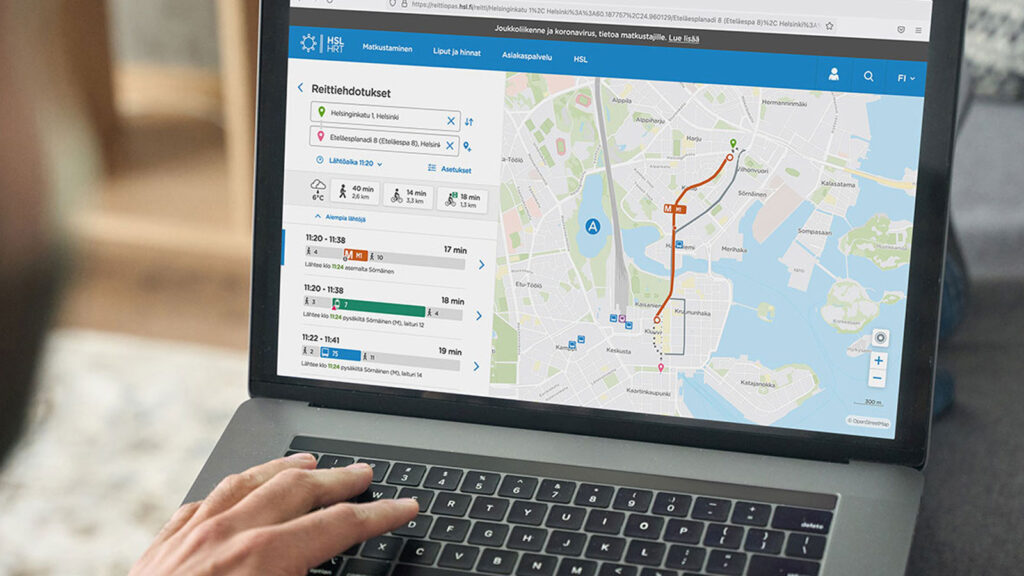Fortum and Solita deliver design expertise to all Fortum employees worldwide
How to help Fortum use design? How to increase design skills in all of Fortum’s business units globally? How to increase and deepen customer insight in all of the company’s operations? These were the questions that Fortum and Solita sought to answer in late 2020 by launching the Design Thinking Academy.
Much of design thinking development had already been done at Fortum in earlier years. Fortum Design started operations in 2017 in the company’s Consumer Solutions division, and two years ago, it started serving all of the company’s business areas.
“We realised that if we aim to build a design-centric company, our maturity in design competence must be raised in all of our business units to match that of the Consumer Solutions division. We wanted to expand the understanding of design across the whole organisation,” says Hanna Vesa, Fortum’s Head of Design.
Results of Design Thinking Academy
-

Expansion of design thinking across Fortum’s whole organisation.
-

Increased employee understanding of design: What does design enable me to do in my own work? What is design thinking in the business world and in society?
-

A new, visually attractive, and tailor-made learning environment that is a first for Fortum.
-

Deepening and expanding customer insight throughout the whole organisation.
Making a unique experiential learning environment
After extensive examination, Fortum decided to acquire a custom e-learning program to support its internal reform and development project. The project began with background research. A comprehensive understanding was sought of the employees’ needs and what support could be offered when their projects couldn’t be assigned a dedicated designer. Before the project started in earnest, Solita’s specialists carefully reviewed the earlier designs and training modules.
The Design Thinking Academy was custom-built for Fortum’s needs. The aim was to reach as many Fortum employees as possible. The e-learning system was to be a flexible way to learn and understand the opportunities of design work. This allows the employees themselves to promote a customer-driven approach within Fortum.
“We wanted to create an experiential and highly visual learning environment to increase the employees’ understanding of what being design-driven means in their own work and in the wider society. What opportunities does it offer for your work? What can you achieve with it?” says Vesa.
Visual Designer Heini Kekki from Solita mplemented the system with a space theme.
“Our objective was to make a high-quality system that was interactive and inspiring. The implementation interweaves high-definition visuals, case descriptions, and narration – they make it special. The space story continues throughout the training. The level of ambition in this project was exceptional,” says Lauri Lukka, Senior Service Designer at Solita.
What is design thinking?
In a large corporation, there is a lot of training available, and employees have access to a variety of training modules and courses. Fortum is a large global enterprise that includes a multitude of microcultures. The problem is how to get busy employees interested in a new learning system.
Fortum has communicated internally about the potential of the Design Thinking Academy, and this work is ongoing. In an internal survey taken in summer 2021, 75 per cent of Fortum employees knew what design thinking meant.
“In future, we will communicate this topic to our employees in a more targeted manner. We will also use the material for different purposes, such as prior reading for projects. It is important to note that people can be quite different as learners and doers,” says Vesa.
Design thinking is key in understanding customers
The employees’ feedback has been mostly positive. The people have found the Design Thinking Academy to be a new and different way of learning.
“We have managed to activate people and build a new way to learn. We’ve also received much praise for the great visuals. Some Fortum employees have felt that the learning environment is challenging. Going through the content requires thinking and consideration which was also our goal,” says Fortum’s Hanna Vesa.
According to Lauri Lukka, projects like this are ultimately about a larger cultural shift towards customer-centricity.
“Customer insight should be at the core of every business, but it is difficult in practice. For example, there is the problem of including customer feedback in complex ecosystems. Being customer-driven means a capacity for empathy and listening, and today this shouldn’t be unfamiliar ground even to business-oriented managers,” says Lukka.
Vesa values continuous learning.
“In these kinds of cooperative projects, all parties will learn new things from each other, and that is important. I appreciate the flexibility of our partners regarding our ideas. We started with a clean slate. The result is a new learning system for Fortum employees, a way to expand their thinking,” says Vesa.




